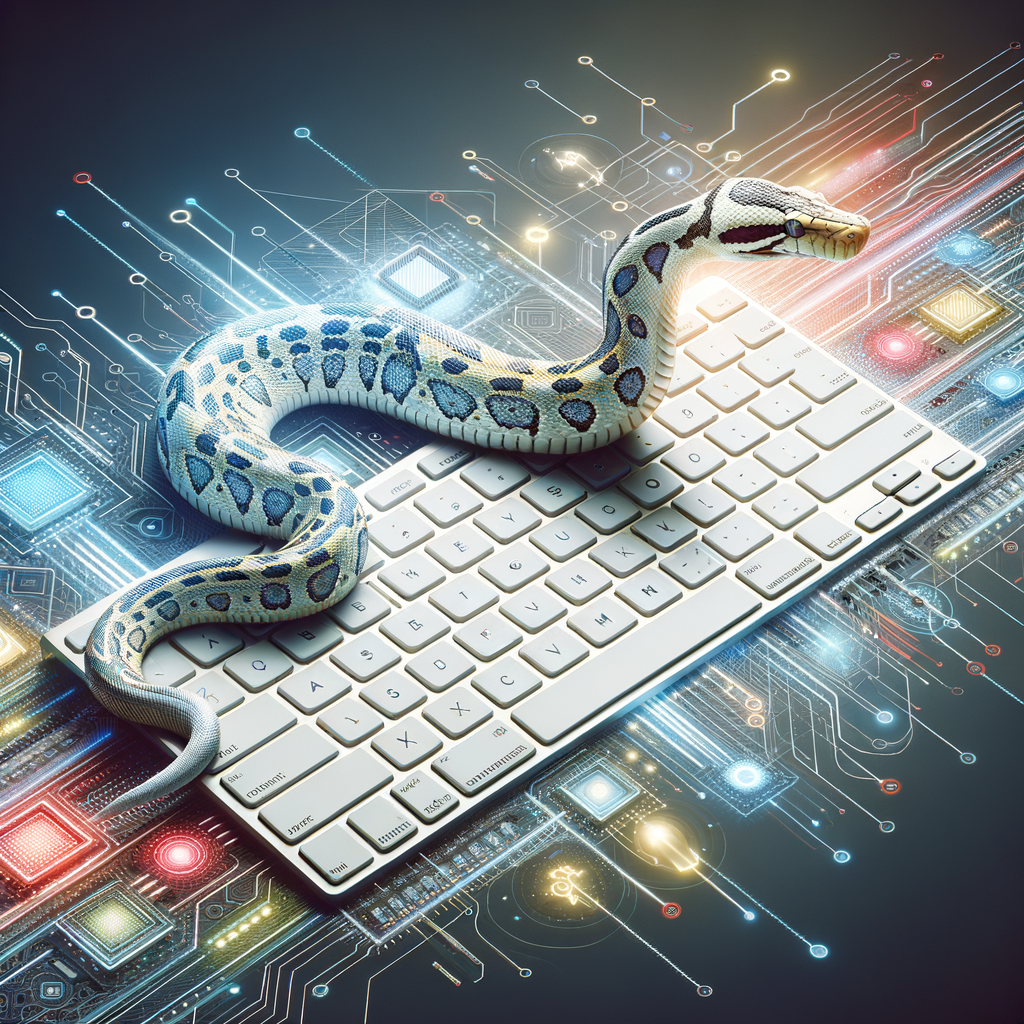
Coding the Future: How AI is Revolutionizing Python Programming
This blog post delves into the intricate world of Python programming as it intersects with artificial intelligence. Explore the latest techniques and libraries that are empowering developers to build cutting-edge AI applications. From automated data processing to advanced machine learning algorithms, learn how Python remains a pivotal tool in the AI revolution.
Coding the Future: How AI is Revolutionizing Python Programming
Introduction
Python has long been the programming language of choice for many fields, including web development, data analysis, and scientific computing. However, in recent years, its popularity has skyrocketed mainly due to its pivotal role in the development of artificial intelligence applications. AI, an interdisciplinary science with multiple approaches, has made Python a leader due to its simplicity and powerful libraries. This article explores how AI is reshaping Python programming and why this synergy is critical as we advance toward an AI-driven future.
The Rise of Python in AI
Python is acclaimed for its simple syntax, which ensures that concepts are easy to read and understand, thus requiring fewer lines of code than languages such as Java or C++. Its dynamic typing and ease of integration with other languages add to its versatility, making it a top choice for AI and machine learning tasks. Popular libraries like TensorFlow, PyTorch, Scikit-learn, and Keras are written in Python or have Python interfaces, thereby streamlining the AI model building process significantly.
Python Libraries Leading the AI Revolution
TensorFlow
TensorFlow is an open-source library developed by Google primarily for deep learning projects. It facilitates the computation and employment of multithreaded, multi-GPU models, and it supports common neural network models such as convolutional and recurrent networks.
PyTorch
Developed by Facebook, PyTorch is revered for its user-friendly nature aligned with Python programming traditions. It's known for its dynamic computation graph which aids researchers and developers in debugging and experimenting.
Scikit-learn
Scikit-learn is built on NumPy, SciPy, and matplotlib, offering simple and efficient tools for data mining and analysis. It has become a go-to library for classical machine learning tasks.
Keras
Keras is a high-level neural networks API capable of running on top of TensorFlow, CNTK, or Theano. Its minimalistic design makes it easy for quick prototyping.
Python's Role in Machine Learning and Data Processing
With AI’s growing influence across different sectors, Python plays a critical role in machine learning (ML) and data processing. Its capability to handle Big Data and automate repetitive tasks makes it invaluable. Modules like Panda, NumPy, and Matplotlib handle data manipulation and visualization, providing frameworks for developing AI-driven solutions.
Data scientists often deal with large datasets derived from various sources such as IoT devices, social media, etc. Python's integration with big data frameworks like Apache Spark and Hadoop simplifies the data processing pipeline management, thus enabling developers to implement complex calculations and transformations with ease.
The Intricacies of AI Model Training
Developing a robust AI model requires navigating through different phases—starting with data collection, going through data preparation, model building, evaluation, and finally deployment. Python’s wide range of libraries simplifies this complex workflow.
In the realm of natural language processing (NLP), Python libraries like NLTK, Spacy, and Gensim provide the necessary tools to build applications capable of understanding and generating human language. These, combined with neural network libraries, assist developers in creating intricate AI models that learn and adapt as more data is fed through them.
Automating Workflow with AI-Powered Scripts
Automation is another crucial advantage offered by Python in AI development. Python scripts can automate mundane and repetitive tasks that otherwise require human intervention. AI algorithms combined with automation scripts can enhance productivity significantly, a practice increasingly used in ML AIOps and DevOps.
The Future of AI-Driven Python Programming
Looking ahead, AI’s influence in pushing the boundaries of Python programming is poised to grow. The development of more advanced AI models will continue to garner support from Python due to its extensive community, rich ecosystem, and continual updates of libraries and frameworks.
Furthermore, the emergence of quantum computing invites Python developers into a new era of AI capabilities. Python frameworks are already delving into quantum computing with libraries like Cirq and Qiskit, offering AI solutions that tap into quantum algorithms to solve complex problems far beyond classical computational capabilities.
Conclusion
The convergence of AI and Python programming represents not just a technological advancement, but a pivotal moment in tech evolution. As AI advancements continue, Python's role as the backbone for innovation remains undisputed, empowering developers to shape the future of technology through dynamic and intelligent systems. For developers and aspiring data scientists alike, mastering Python and its AI-driven applications is not just an opportunity; it is imperative for riding the future waves of technological transformation.